Questionhi i brought a gecko 2 weeks ago from a pet shop ,since we have had him we have tried feeding it on ,crickets mealworm waxworm,but is not interested at all in eating or taking the food,in fact it seems more frightened with any food that move in front of him,hes lost a bit of weight from his tail and is only 7 months old,from the day we brought him the pet shop gave us some black crickets witch were quiet large and seem to have attacked him,with a large tank with heatmat at one end with a swet box at the other end with damp moss inside to help with shredding,hope were doing everything wright just worried that hes not eating ,can you suggest anything to help.
darren
AFT GECKO
AnswerHi Darren,
Below is information based on a leopard gecko...if this isn't the species you have, please let me know.
Knowing the temperatures in his tank is important(see care sheet below) If the crickets were too large for him, they may have caused a bit of an intestinal blockage...how is he acting other than not wanting to eat? Has he gone to the bathroom? If he is acting lethargic in any way,(out of the normal) then a vet check is needed to determine if he can have a blockage. Also, using sand can cause blockages as the gecko will get bites of sand as he goes to catch a cricket.
There can be several reasons why he won't eat.
It takes them a few days to get used to their new home and settle in. At this point, I would not force him to eat...
Also, if they don't have the right set up with temperatures, etc that can cause them not to eat also. I've included a basic care sheet on the Leo so you can double check your temps, etc.
Once you are sure all is correct, let him settle in for a few days. Also, leos are nocturnal. meaning they are active at night. Thier feeding time is generally after the sun goes down. I would place some meal worms in an escape proof dish and see how that goes. If in a few days, he doesn't start eating on his own, I would have a fecal(poop) check done by a vet to be sure he has no parasites that can be causing the problem. If your gecko has a nice fat tail, going a few days without eating isn't a problem when they are healthy.
BASIC CARE FOR A LEOPARD GECKO
Leopards are pretty easy to care for but they do need
special care. Here are some of the basic needs of your
gecko.
HOUSING: The need to have at least a 20 gallon long tank for
one Leo. This needs to have a secure fitting screen top...they can be quite the escape artists!!! They need to have a humid hide box.You can make
this with something as simple as a small plastic dish with a
hole cut in one side and a small mesh bag filled with some
Sphagnum moss, coconut bark or Peat moss that you mist.
I made mine out of the small plastic folgers coffee containers...I cut an opening in the lid..and put the moss in..they LOVE it. I use the terrarium moss in mine.
I use that on the warm side of the tank. Be sure to provide a cool hidebox on the other end. I also provide a mid temperature hide...which is in the middle of the tank.I use the critter caves which you can purchase. NOT the ones that have heat in them!!!!
Provide secure climbing areas for your gecko. Fake plants, rocks and branches are all fine to use. be sure there are no wires or sharp ends to any fake plants you use.
SUBSTRATE:(that's the stuff on the floor of your tank) News
paper, lizard carpet or paper towels work great and are easy
to clean and are much safer than any loose substrate. Sand or other loose substrate is not recommended as that they can be deadly to the leo when it is ingested(eaten, even by accident while eating their insects)...
TEMPERATURES: They need a warm area of 88-92 degrees and a
cooler area in the upper 70s, low 80s. At night their
temperature can drop to the low to mid 70's.
Never use a hot rock for a leopard gecko...or any reptile.
They can severely burn any reptile. You can use a heating
pad under the tank,under tank heater, or you can use a regular household
lightbulb in a dome fixture with a ceramic socket in it to
keep the warm area at the 88-90 degree area.At night, no white light. If room temperatures stay above 70 degrees, no extra night heat is needed. The undertank heater or heating pad should cover about 1/3 of the tank....be sure to raise the tank up about 1/4-1/2 inch off the stand when using an undertank heat source to prevent heat build up which can cause the glass to break and hot spots in the glass. Be sure to have a good layer of newspaper, carpeting or, even a thin flat rock(such as tile) on top the area that the undertank heat source is placed...if you use a thin rock or tile, it helps to distribute the heat very well.
You can use the special nighttime lights that are designed for reptiles. I like using a ceramic heat emitter on a thermostat for nighttime heat.
DO NOT use black lights or party lights as they can cause eye damage!!!!
The wattage you use will vary based on room temperature and size of tank.
LIGHTING: Leopard geckos do not need UVB lighting but it does not hurt them to give them uvb. They should have some type of light during the day, be it a uvb tube, regular florescent light, reptile day light or regular household lightbulb. NO white lights at night!!!
FEEDING: Geckos should not be fed crickets or other insects that are bigger than the space between their eyes. Crickets and other food items such as silk worms, super, and an occasional treat of a wax worm, need to be dusted with a calcium supplement two times a week and also they should have a small dish of calcium in their tank. I use the lid of a milk jug for the little dish of calcium in their tank. For dusting the insects, Use a calcium with no added phosphorus.
Insects must be gut loaded(fed) for at least 48 hours prior to feeding your gecko. Remove any uneaten crix or superworms after 15-20 minutes..... Place a piece of cut potato in the tank so that if you have missed any uneaten insects, they will eat the potato instead of nibbling on your gecko!!!
You have to be sure to feed your crickets the right foods
before feeding them to your gecko. If your crickets/insects are not healthy and well fed, your gecko will not get the nutrition
he needs. You can gut load your crickets greens, veggies, cereals or specially designed commercial foods for crickets or the insects you are feeding.
Be sure to have a small dish of clean water for your gecko
at all times!!
You can offer them some baby food or fruits on occasion ...
Mine will even eat a small piece of watermelon now and then.
WATER: always provide a dish of drinking water. If you choose to mist your gecko to drink, its best to not get the tank too wet as that they do not do well with higher humidity. Sometimes its better to take your leo out of their tank to mist them to get them to drink!!!
HANDLING: Some geckos enjoy being held...others prefer not to be handled at all. Be sure to be very gentle when holding your leo and NEVER grab them by the tail! Their tails are extremely fragile and will break.
I do suggest finding a vet that can treat reptiles BEFORE you actually need one!!! To find a vet that is able to care for reptiles:
http://www.anapsid.org/vets
http://www.arav.org/Directory.htm
For more information on leopard geckos:
http://www.thegeckospot.com/leocareindex2.html
http://www.drgecko.com
If you have any more questions, or don't understand something, please let me know!!

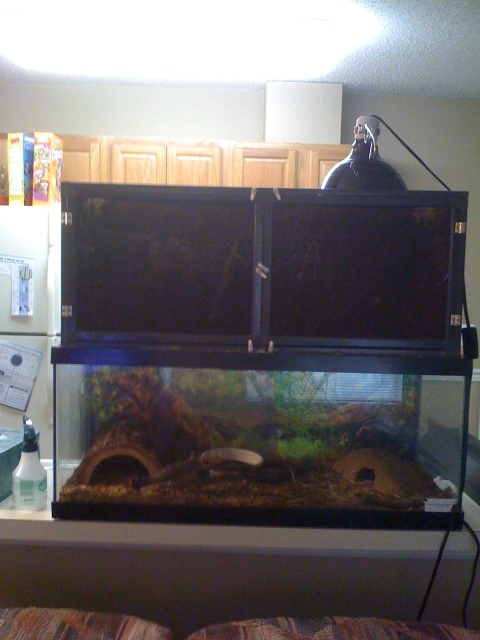 Heating/Lighting
QuestionQUESTION: I recently moved my Ball Python to a
Heating/Lighting
QuestionQUESTION: I recently moved my Ball Python to a
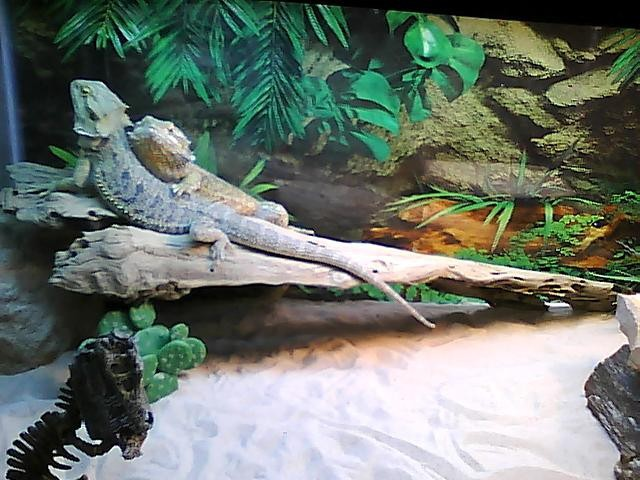 I have all the supplies
QuestionQUESTION: Hello Tracie,
I have everything I nee
I have all the supplies
QuestionQUESTION: Hello Tracie,
I have everything I nee
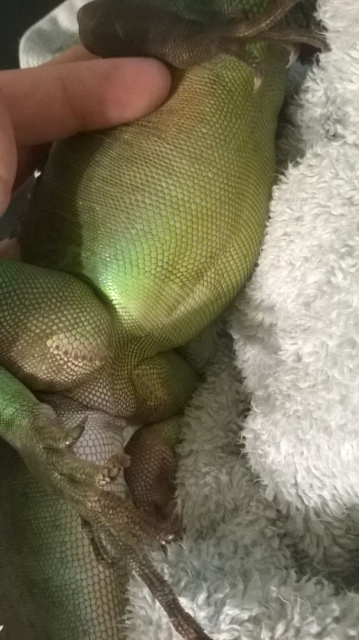 xerxes
Question
xerxes xerxes
Sorry for lack of i
xerxes
Question
xerxes xerxes
Sorry for lack of i
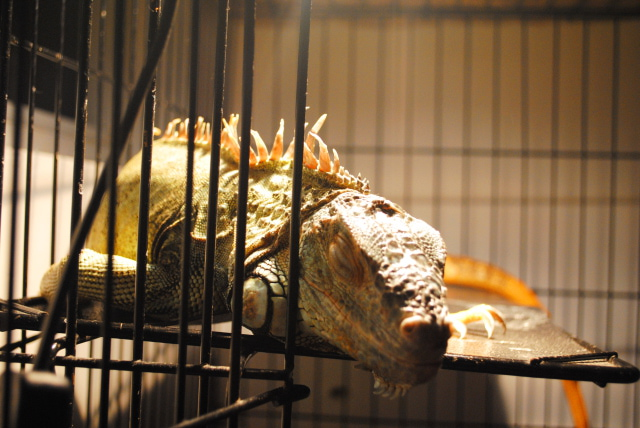 My iguana lost his appetite and is pale, dehydration?
QuestionQUESTION: My pet iguana wont eat as much and im
My iguana lost his appetite and is pale, dehydration?
QuestionQUESTION: My pet iguana wont eat as much and im
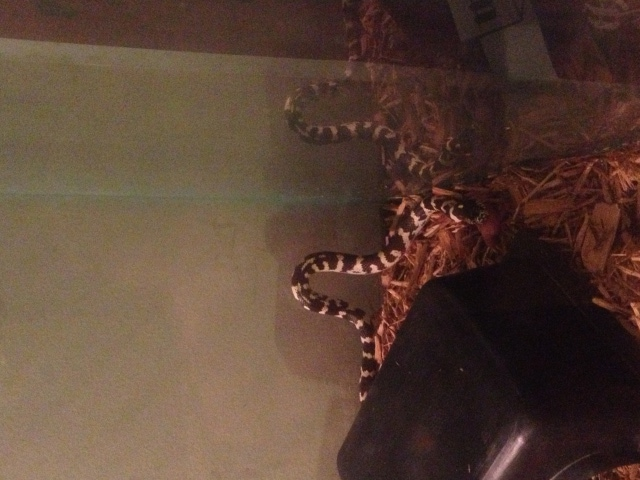 California king snake
Question
Snake
Hi I bought a California king sna
California king snake
Question
Snake
Hi I bought a California king sna